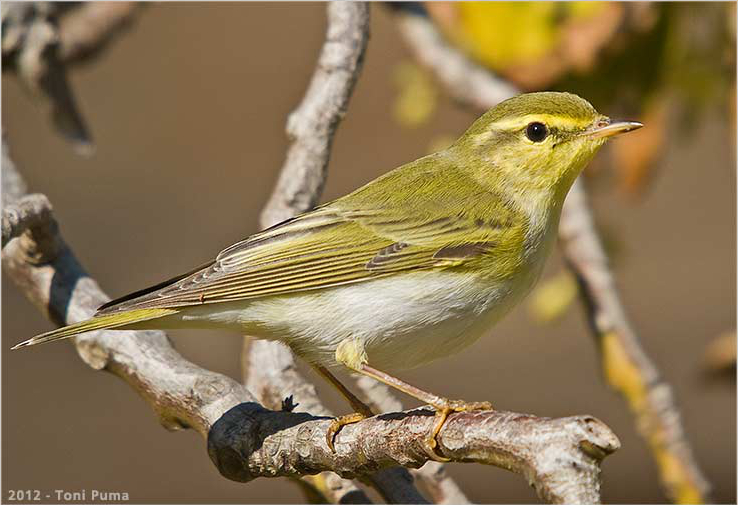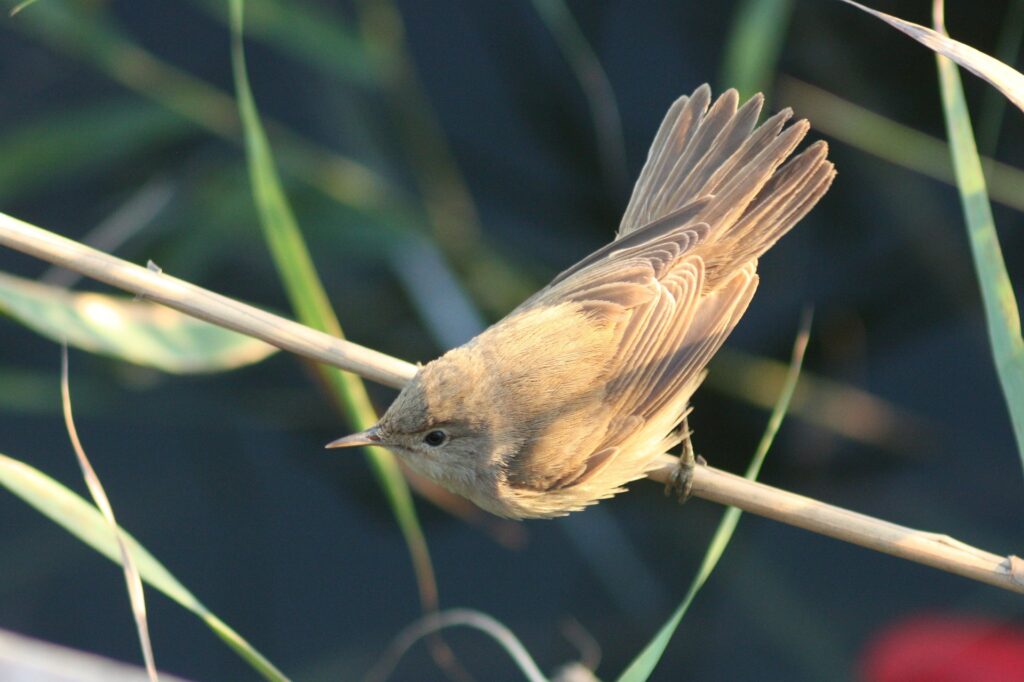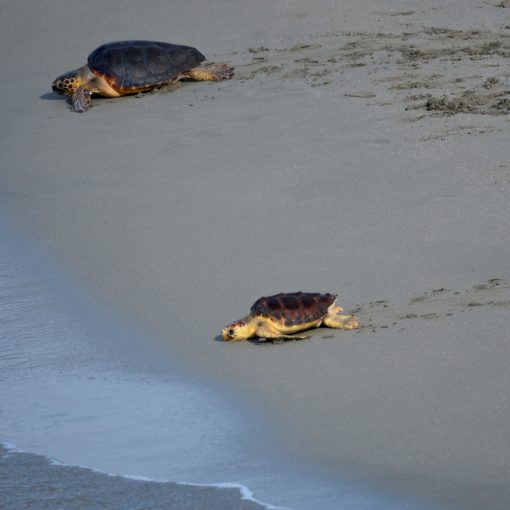
Migration is a completely dynamic phenomenon that over time has evolved in parallel with changing environmental and climatic conditions in particular. To maintain its character of survival strategy, the adaptive changes that migration must face are therefore continuous. As a result, the different species must optimize their movement strategies in response to the changing environmental conditions that arise. This can become problematic in conjunction with periods of strong dynamism of general ecological conditions, as is happening today with the rapid climatic-environmental changes of our planet.
As increasingly emphasized, the demographic trends of migratory species are no longer to be considered, on a global level, as positive and the overt decline of migratory species has become a heavy biological and conservation problem, difficult to face and above all to understand in its causal factors. In particular, the mechanisms that underlie this process of decline are not understood at all, especially considering that even the phenomenon is generalized, it is not general. In fact, many species appear to be immune to population depletion, while others are heavily affected.
If we consider the migratory behavior of birds as a whole, what is most striking is its extreme diversification, not only between different species but also and above all within them, with significant differences between the populations that compose them. Defining a species as a migrator can in fact often lead to error, since the diversity of spatial behavior can be in a given striking species, with populations completely settled alongside others partially migratory, or others that move over short or long distances, overcoming or keeping within the boundaries of the same biogeographic region.
Even more relevant is the fact that, still within the same species, migratory populations located in different areas may have displacement routes and consequently different destinations, dispersing for wintering or nesting, in equally different areas.
From the genetic point of view, such a diversity of spatial behavior is governed by a complex genetic polymorphism that controls both the extent of the displacement and the course to be taken. It follows that even small differences of a genetic nature, responsible for a different gene assortment, are expressed in completely different migratory customs.
The question that has been asked in recent times is whether species with a high diversity of migratory behaviors may or may not have an advantage, compared to species with lower migratory variability. This with regard to a more favorable quantitative status of its own populations, thus managing to oppose more brilliantly to a numerical decline of the species to which it belongs.
To attempt to answer this question, the differences in migratory behavior of 340 European nesting species were correlated with their numerical trend. The first data was obtained through the mapping of the routes and the extent of displacements of the various populations; the second, using the most recent estimates of their consistency (Gilroy et al., 2016: Ecology Letters).
The result is that the species that disperse in the larger winter territories compared to the nesting areas have more favorable population trends than the species that disperse on smaller non-reproductive territories. Furthermore, the partially migratory species (ie those with even partial overlap of the nesting and wintering areas) have also a lower tendency to numerical decline compared to those totally migratory or permanent. This result appears to be independent of the migration distances actually traveled.
An element of great interest that results from this study is that the spring arrivals of partially migratory species are more precocious than those totally migratory, suggesting that the former, by virtue of their diversity of behavior, have a quicker response than climate change which is of interest to us, for which a partial displacement strategy would represent a better way of adaptation.

As an example, Gilroy and collaborators cite that of the Wood warbler (Phylloscopus sibilatrix) and the Reed warbler (Acrocephalus scirpaceus), well-known migrants birds in our faunistic landscape. The first has extensive nesting quarters from the British Isles to Ukraine, but the wintering ones are restricted to a relatively small area of west-central Africa. The second has a nesting area that is completely comparable in extension, but winters throughout sub-Saharan Africa. Well, if the Cannaiola has no conservation problem and indeed its populations are increasing in numbers, those of the Wood warbler are in a rapid, worrying decline!

A questo punto diviene cruciale raccogliere il maggior numero di informazioni possibili sulle strategie di migrazione e sulla capacità di dispersione delle popolazioni che compongono le varie specie, così da avere indicazioni sul grado di rischio di declino numerico in cui esse possono incorrere. Le moderne tecniche di indagine telemetrica certamente possono essere determinanti nel raccogliere tali informazioni, soprattutto per la possibilità che esse offrono di avere dati certi ed immediatamente disponibili, così da restituire quadri di monitoraggio capaci di seguire il rapido evolversi delle condizioni ambientali. Queste metodologie telemetriche fanno scadere in secondo piano le classiche metodologie di inanellamento, lunghe, settoriali, farraginose e con tempi di restituzione dei risultati…geologici.
All this is like saying that species that have diversified migration routes and disperse by overwintering in large areas, where they can meet equally diverse environmental conditions, manage to maintain better population levels. Unlike the species that have routes converging on restricted winter quarters, those that are dispersed in more extensive environments, with characteristics that are well diversified from an ecological point of view, would have the possibility of countering phenomena such as the growing desertification to which African territories are increasingly subjected vast, or limit the consequences of local habitat losses or the widespread environmental deterioration. All these elements are to be considered the key factors affecting European migrants in the sub-Saharan wintering districts, determining the population collapse (Kirby et al., 2008: Bird Conservation Int.).
The intra-palearctic partial migratory species are distributed over large wintering areas that are reached with multiple and often also very diversified displacement routes. As a result of the considerations set out above, they would, therefore, be able to counteract the mechanisms that lead other species to a sensitive numeric depletion, up to reaching vulnerability thresholds for reasons that previously seemed inexplicable. If we just think of the Anatidae that winter in our country, we can realize that the population conditions of many of them are of numerical expansion, as confirmed by the winter counts officially conducted for over thirty years; even if there are examples of worrying contractions for reasons of specific rarity or referable to those mechanisms previously illustrated.
At this point, it becomes crucial to gather as much information as possible on migration strategies and the dispersal capacity of the populations that make up the various species, so as to have indications on the degree of risk of numerical decline in which they may incur. Modern techniques of telemetric investigation can certainly be decisive in gathering such information, above all for the possibility that they offer to have certain and immediately available data, so as to return monitoring frameworks capable of following the rapid evolution of environmental conditions. These telemetric methods cause the classical methodologies of ringing, long, sectorial, cumbersome and with… geological times to return results.

From an evolutionary point of view, the predictions arising from the analyses conducted by Gilroy and collaborators, also taken on by Fuller (2016; Nature), do not surprise us: genetic variability has always been synonymous with populist stability and this is a “creed” about which many of our conservationist thoughts and considerations are based on.
Credits
Author: N. Emilio Baldaccini. Former Professor of Ethology and Conservation of Zoocenotic resources at University of Pisa. Author of over 300 scientific papers on national and international journals. He is active in the field of scientific education, and co-author of academic textbooks of Ethology, General and Systematic Zoology, Comparative Anatomy.


